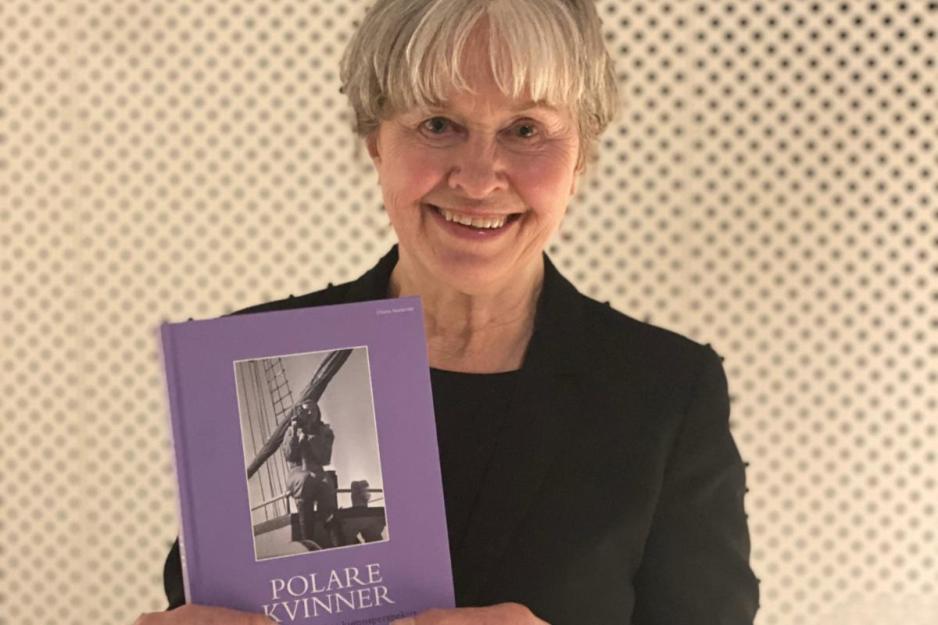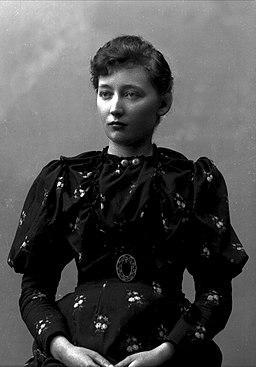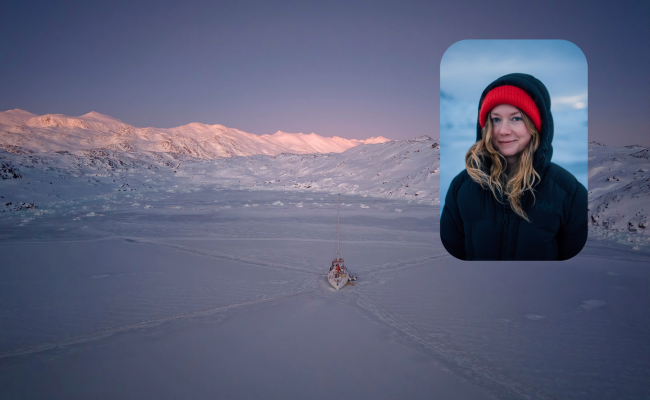The Arctic Scientist Profiles: Researcher Anka Ryall Highlights Female Voices in the Norwegian Polar History

Anka Ryall med boken Polare kvinner. (Foto: Elin Vinje Jenssen / Norsk Polarinstitutt)
Anka Ryall's research career has been marked by a series of coincidences, but women's travel literature has remained a recurring theme throughout. In the book Polar Women, she sheds light on the women in what is usually a very masculine representation of the Norwegian polar history.
"I belong to the generation of researchers who have had a research life not characterized by career planning. It has been marked by a series of coincidences."
The statement comes from Anka Ryall, Professor Emerita in Women's and Gender Studies at UiT The Arctic University of Norway. A love for women's travelogues, however, has followed her from nearly the beginning.
After completing her English studies, she took a temporary teaching position in Bø, Telemark, where she was introduced to travelogues by Victorian women.
"I had been interested in British 19th-century novels by women, but the books the women wrote about their own travels provided a whole new picture of the role of women in the 19th century."
She then applied for a research scholarship to write a thesis about women's travelogues from the 19th century. She got it and journeyed to Oslo for the research project "Odyssevs in skirts."
To the North
Toward the end of the project period, she was encouraged to apply for a temporary position at the University in Tromsø.
"And I was about to be divorced, and it was a good opportunity to start new somewhere else. I thought it would be an adventure and was already fascinated by Tromsø," she says.
The temporary position was extended several times, and she eventually got a permanent job. The thesis was never concluded. Instead, it became a book in Norwegian with the same title, published in 2004.
"I must admit that the English subject becomes more and more peripheral to me. Not only was I interested in travel literature, but also in writing in Norwegian," she says and explains that she wanted to write in the borderland between research and dissemination, such as many other literature researchers.
The modern Arctic
Between 2010 and 2012, Ryall served as the Director of the Norwegian Study Centre in York, England. Concurrently, she held a professor II position at UiT's Centre for Women's and Gender Research, which she used to apply for research funds.
In 2013, she returned to Tromsø to lead the research project "Arctic Modernities," focusing on the description of the modern Arctic. In many ways, the project was a successor to "Arctic Discourses," which she led, along with colleagues Henning Howlid Wærp and Johan Schimanski, from 2006 to 2009.
While "Arctic Discourses" explored Arctic literature after the Romantic breakthrough, the new project examined literature from and about the modern Arctic, spanning from the 1800s to the present day.
This became the true door opener to the North and the Arctic for Ryall.
"The Arctic is often seen as something pre-modern; it is linked to a pre-modern culture and extreme nature."
"In this project, we were concerned with incorporating the Arctic into modern culture," says the researcher. "Therefore, we emphasized descriptions of everyday life in the Arctic, the Arctic seen from within as well as from the outside."
"Literature helps develop feelings for landscapes, nature, and people. It is not just geology, geography, and politics that are important fields for understanding an area. In literary studies, we are concerned with the aesthetic and literary values, everything that creates identity, love, and loyalty."
As the project leader for "Arctic Modernities," Ryall began writing about Arctic travelogues by women. In connection with this work, she was referred to the Norwegian Polar Institute's biography archive.
Anka Ryall is Professor Emerita in Women's and Gender Studies at UiT The Arctic University of Norway. Here she is photographed outside Sysselgården in Longyearbyen on May 4th, 2022, in connection with the launch of the book Polar Women at the Svalbard Museum. (Photo: Tom Kristiansen)
No Norwegian Polar Institute without women
The biography archive contains materials about individuals associated with Norwegian polar and ocean activities in the Arctic or Antarctica during the 1900s.
The biography archive awakens a curiosity in Ryall. It was no surprise to her that there were few female names in this archive, but rather that there were so many there that she could not identify.
Based on this archive, Ryall wrote the book Polar Women (Polare kvinner), her version of the Norwegian polar history. This story is about more than just heroic polar voyages.
"There are nearly no female researchers in the archive. A third of the women for whom information is available worked at the office of the Norwegian Svalbard and Arctic Ocean Survey (NSIU), the forerunner of the Norwegian Polar Institute. Probably none of them were in the Arctic, but I believe that their contributions would have been essential for establishing an institution for Norwegian polar research," says Ryall.
Some of the women in the office had place names in Svalbard named after them, such as Alfhildtoppane after Alfhild Horn, Elsenuten after Else Rosted, Kinnhøgda after Kinn Glückstad, and Svanhildpasset after Svanhild Lund.
In this way, the office ladies' contribution to polar research has been made visible.
Also read (the article continues below)
Throughout the book, Ryall attempts to nuance the picture and the stories about the Arctic.
"It is completely wrong that the Arctic is a masculine place. But the most famous literature presents the Arctic as a place for men, where men can be men," she says, and adds:
"I don't think women experience nature, people, and relationships differently than men. But I do believe they experience their own role differently. In the encounter with the Arctic, the idea of the Arctic as a male space is at the back of the minds of women who come there from outside. That’s why they have a kind of double perspective on their own experiences. Maybe they see other things, maybe they have an eye for something different than what men have."
Defining what is masculine and what is feminine is not an easy task. Instead, it is about making women visible.
"Both women and men take their domestic cultural experiences with them in the face of the unknown, including the Arctic," says the researcher.
"When women are present in Norwegian polar history, they have therefore brought in perspectives based on female experiences."
An eye for detail

Botanist Hanna Resvoll-Holmsen. (Photo: Gustav Borgen via Wikimedia Commons)
A polar woman who has made a particularly strong impression on Ryall is the botanist Hanna Resvoll-Holmsen (1873-1943).
Resvoll-Holmsen went to Svalbard for field work in 1907 as the first female polar researcher. She was so ahead of the curve that it would take 30 years before she had a successor. In 1927, she published the first flora of Svalbard.
"She funded her second field work in 1908 by writing travelogues for the Norwegian newspaper Aftenposten. Together, they are a far less-known classic in Norwegian Arctic travel literature than they deserve. The letters depict a female research role without role models, a role she associates with undivided joy. At the same time, it showcases her eye for detail in the Arctic nature. As a botanist, she gets close to the small polar plant. She emphasizes the small and humble in the massive landscape," says Ryall.
Her dwelling on details contrasts with the most famous depictions of the Arctic, which are often heroic polar expeditions and sporting achievements. With a poetic presence and a sharp pen, she had an eye for the diminutive.
She believed that people could learn from the frugality of Arctic plants.
"She was so revolutionary in so many ways, but simultaneously so modest on her own behalf. Although she considers polar plants with an analytical researcher's eye, she sees herself on par with Arctic plants and birds. She is concerned with humans being understood in terms of the laws of nature as well," Ryall concludes.



